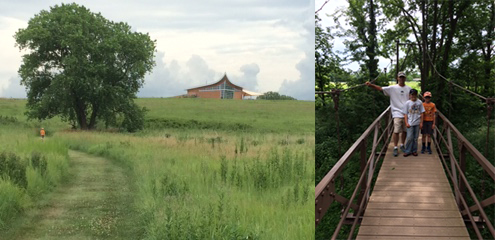Ecotourism Definitions
By Mikal Eckstrom, Ecotourism Project Team, UNL Graduate Student (History), Center for Great Plains Studies
Every spring Sandhill cranes descend along the Platte River. Write ups in the Wall Street Journal and the Smithsonian Magazine tout the many benefits of witnessing the cranes annual migration. But the cranes and the people who visit the Great Plains to see them provide another benefit to the Great Plains: ecotourism.
Ecotourism as a Term
Originally coined by Héctor Ceballos-Lascuràin in 1983, the definition of ecotourism paired nature-based travel to somewhat-untouched areas with a component of eco-education. The Centre for Ecotourism notes that this definition gave birth to a concept that over time “developed [in]to a scientifically-based approach to the planning, management and development of sustainable tourism products and activities.”
For the Great Plains Ecotourism Coalition (GPEC), ecotourism is a form of “travel that deepens one’s engagement with nature, conserves the environment, and improves the well-being of local communities.” Our definition states that, “ecotourism stimulates curiosity about the natural world, builds understanding of natural processes, and helps develop a consciousness of our role as nature’s stewards.” Our definition and commitment to conservation also places us in line with The International Ecotourism Society. Like TIES, we believe that any education is a shared experience between guests and staff at any site. However, “responsible travel” must “sustain the well-being of the local people,” and place conservation at the forefront of any engagement with the natural land and habitat. The coalition, like others, has placed that definition into action by working with partners and promoting the Great Plains. Our definition is the guidepost for the work we do.
How Ecotourism Sites Operate
Ecotourist sites like those operated by our members, “provide places to walk, hike, camp, photograph, observe, touch, smell, learn about, and reflect upon the wondrous natural environment that is the Great Plains. Sights like butterfly gardens and bison herds help “connect the traveler to the land” and “some also offer opportunities to engage more deeply.” Another way to do that is by volunteering with an organization. For example, the Crane Trust has worked to return bison to the Mormon and Shoemaker Islands, where people can volunteer through science, land and trail maintenance, or community outreach.
The way a site operates remains crucial to our definition. While some partners are non-profit and do charge a fee, others like Our Heritage Guest Ranch and Sheepwagon Hideouts are for-profit enterprises that work to keep stewardship and a strong connection to the land as their focus. Other sites, like the Homestead National Monument in Beatrice, Neb., are owned and operated by the National Parks Service (NPS). Public lands, private for-profit businesses, and non-profit businesses alike understand the importance of conserving prairie grasslands and habitat.
Just as the land and natural environment we inhabit shapes us, we work with our partners to place conservation and education at the forefront of our mission to ensure it for future generations on the Great Plains.

